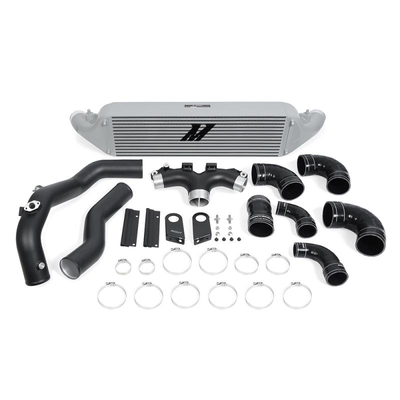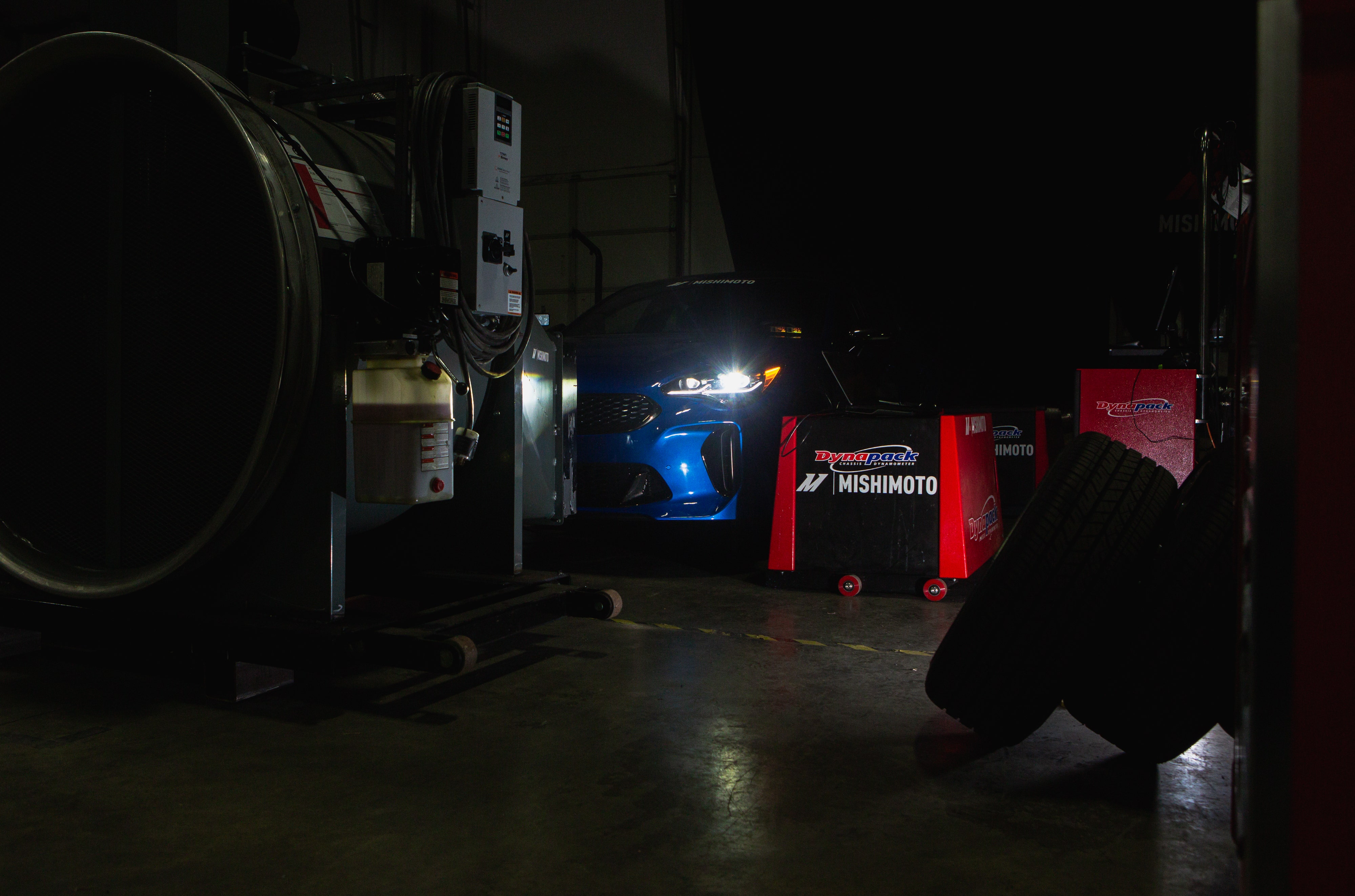
Float Like a Butterfly, Sting like a, Kia? - Performance Intercooler Kit R&D, Part 7 - Dyno Results
Kia has made their big splash in the automotive industry with the Stinger's launch, and we wanted to make sure that we made ours right along with them. We've been looking for the perfect stone to chuck into this transcendental pond and we've finally found it, coincidentally in the shape of a massive intercooler. Since we've already reviewed the physical details of our new design in the last post, let's dive right into the testing.
Dyno-mite
Cooling power is key for the intercooling system, especially once the boost gets turned up. I can only assume you're here to see how this kit performs under pressure, so we strapped our Stinger up to our Dynapack system for a torture test in the name of science. Our testing consisted of two stages in order to get a good look at just how well our intercooler kit performs against the stock unit.
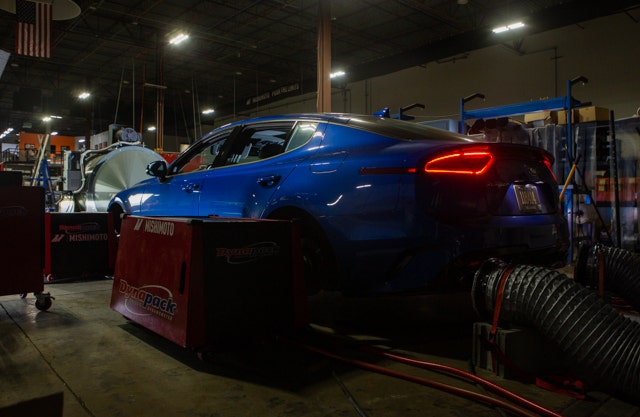
First up, we have our power pulls. In this test we performed a single power pull on our dyno in order to get a focused snapshot on the difference between the two kits. For this first round, the vehicle was brought to operating temperature (185°F) by idling on the dyno, and a single pull was performed giving us an immediate look at the performance of the two intercoolers. When repeating this test we made sure to let the vehicle cool back to the operating temperature before running another pull. With the shop's ambient temperature of 70°F recorded, it was time to start the tests.
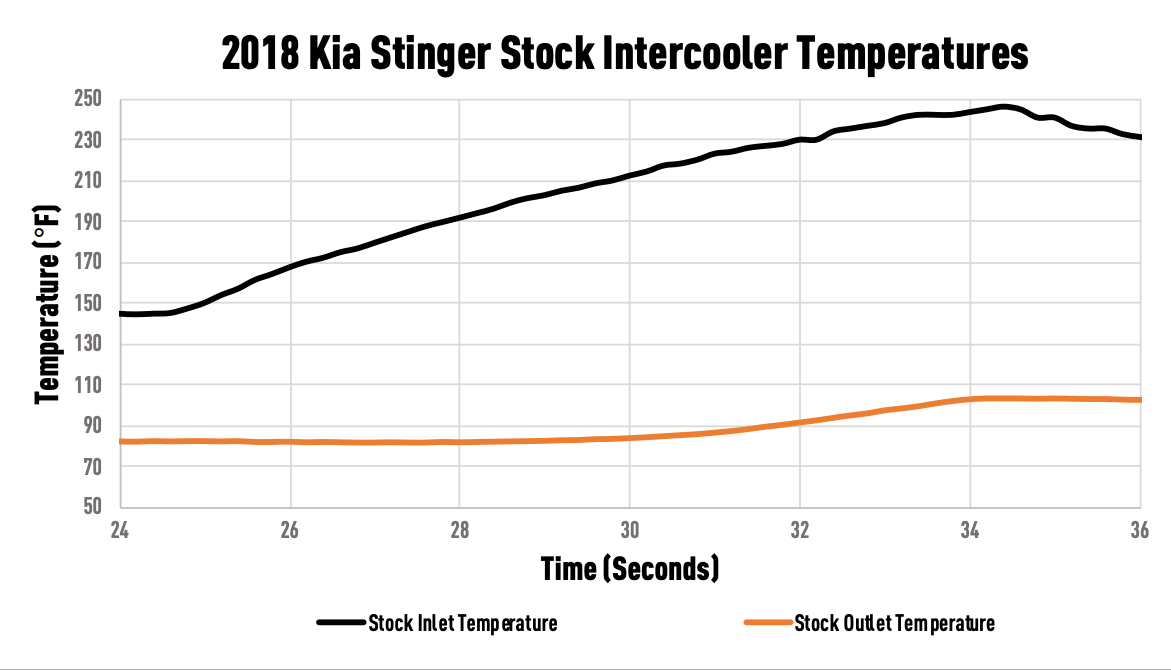
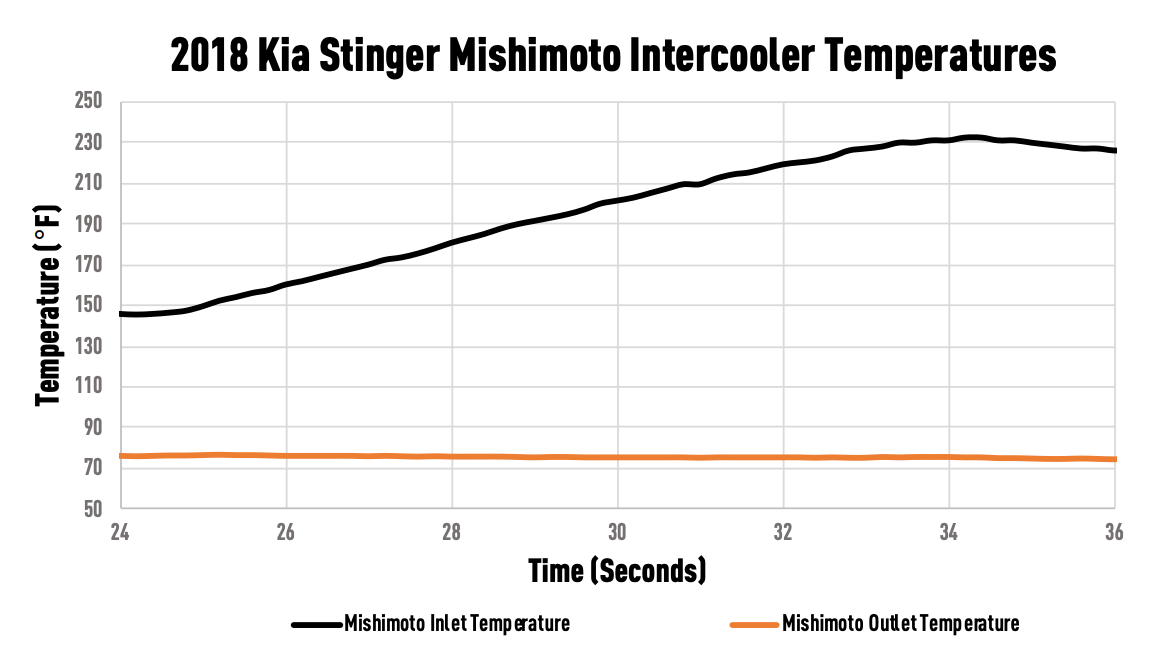
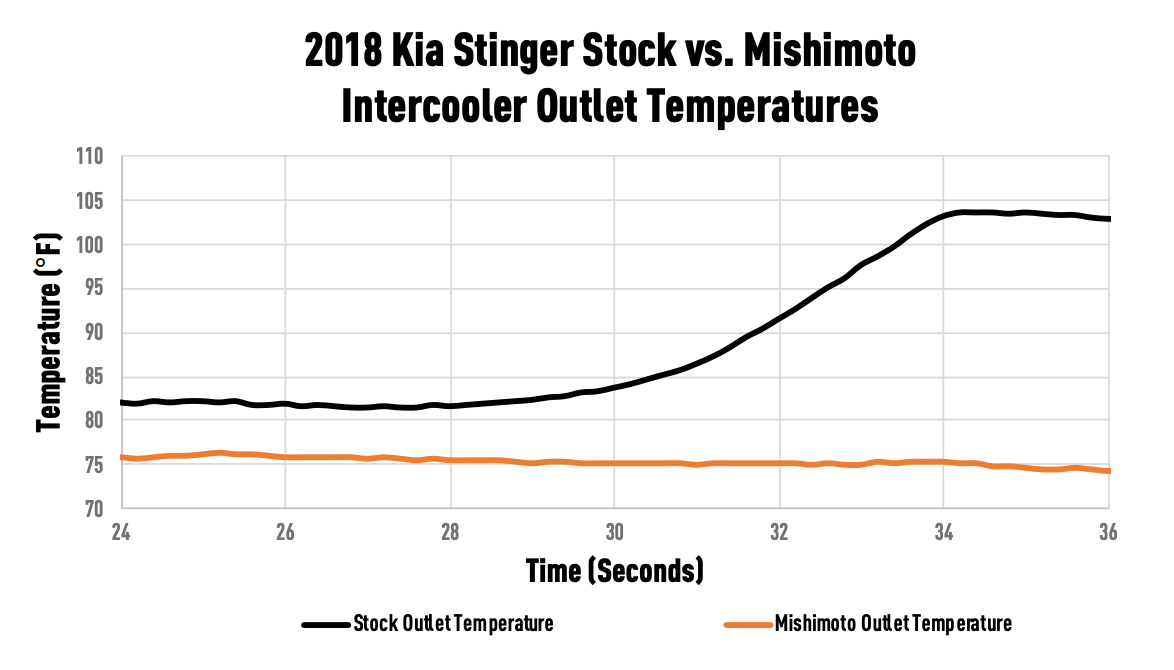
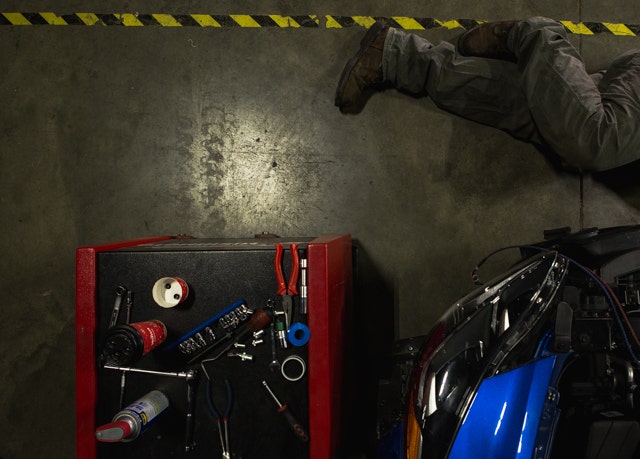
Since I'm sure many of you don't live your lives a quarter-mile at a time, we also devised a test that would simulate daily driving, but under the harshest conditions. For our heat soak test, we started out with the same warm-up procedure, and the same measurement of the shop's ambient temperature (both in method and reading). This time, however, instead of giving the Stinger a break between runs, we ran 6 consecutive pulls for a gauge on the effect of heat soak for both cores.
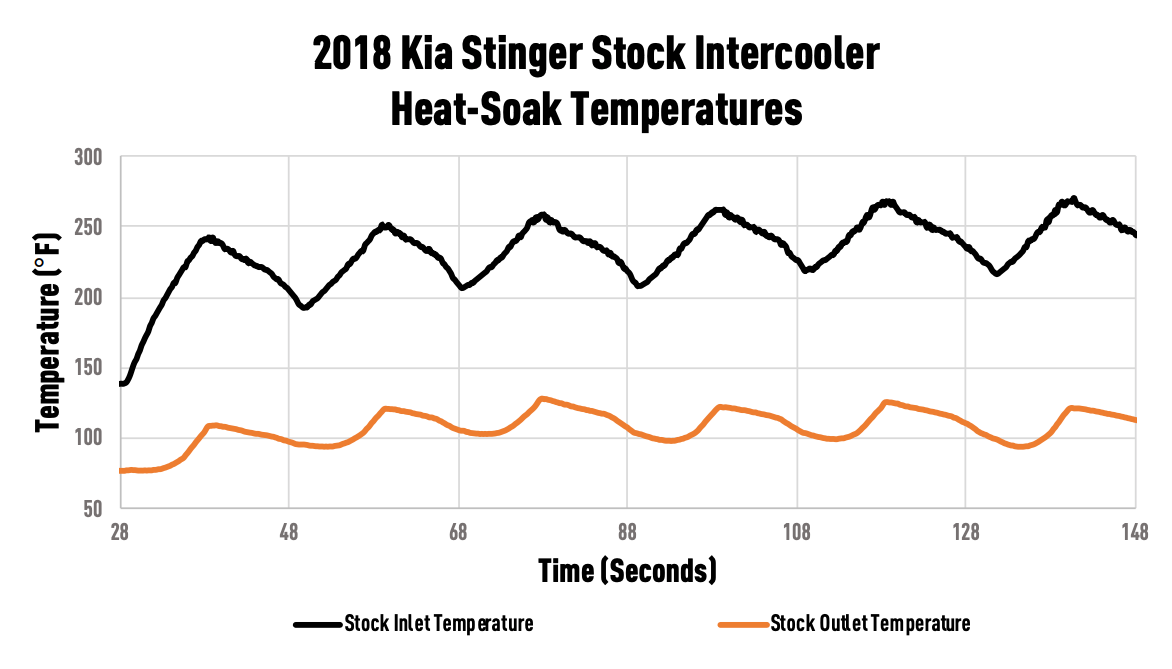
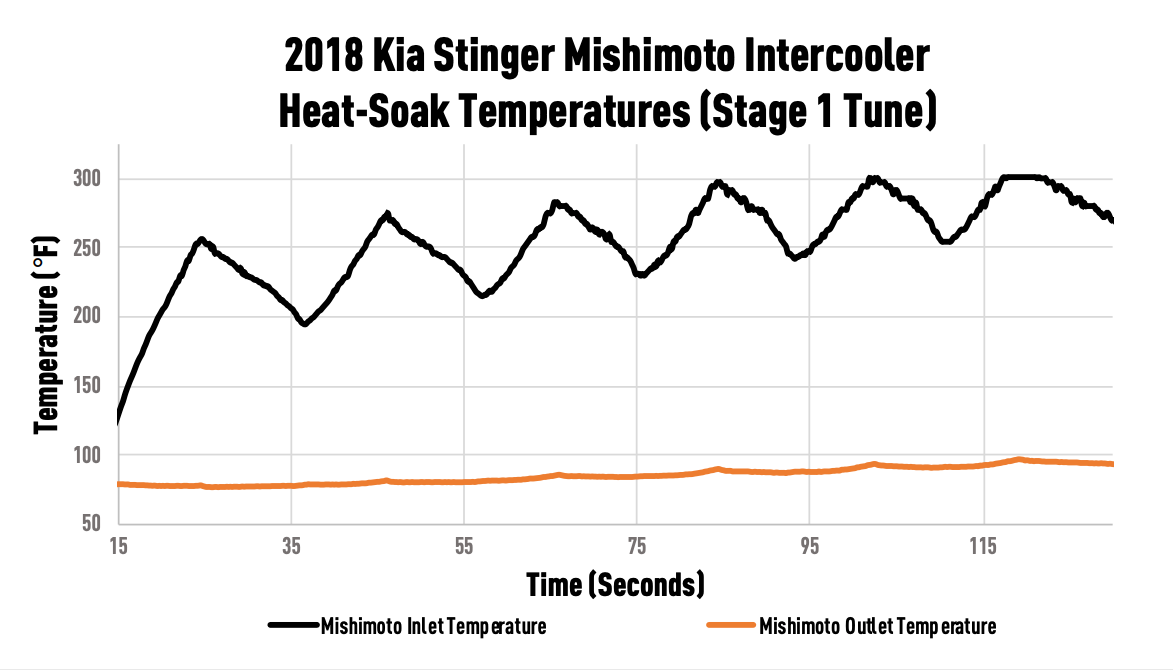
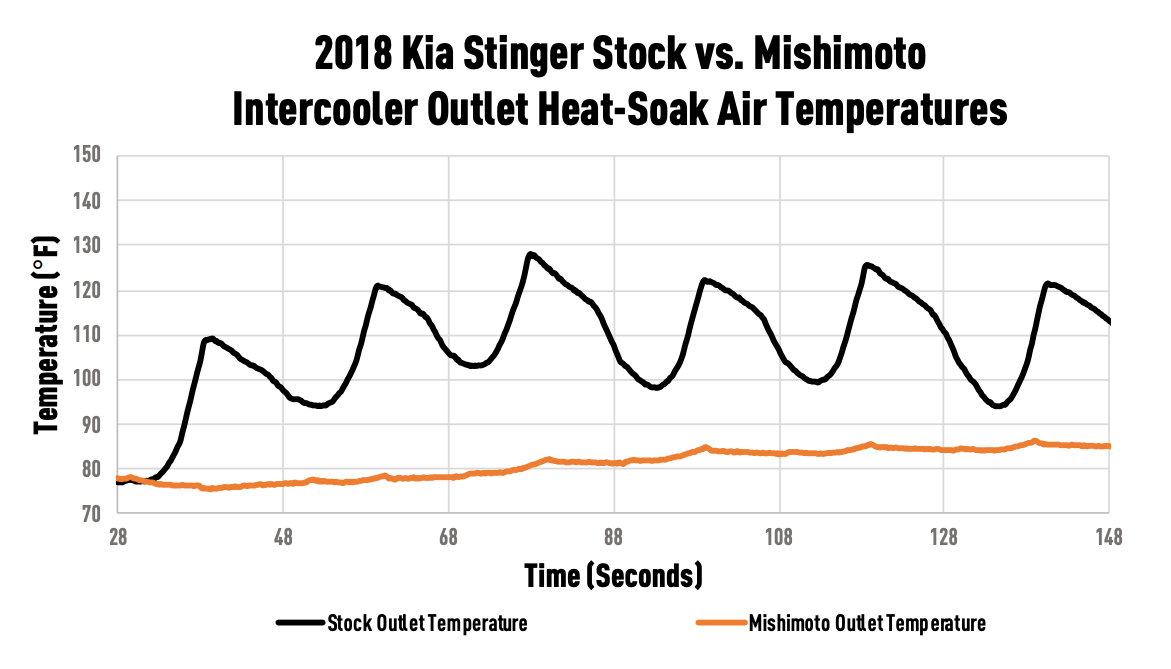
Our testing didn't stop there. Since the main purpose of upgrading your intercooler is to build a better foundation for performing efficiently after tuning, we wanted to ensure that our kit was operating as designed with increased boost pressure. We opted to run a stage 1 map on our Stinger, which turned up the boost on the Lambda II, and churned out approximately an additional 50 whp. With the map loaded on the ECU, we ran the same series of tests between the stock setup and our kit, starting with the power pulls.
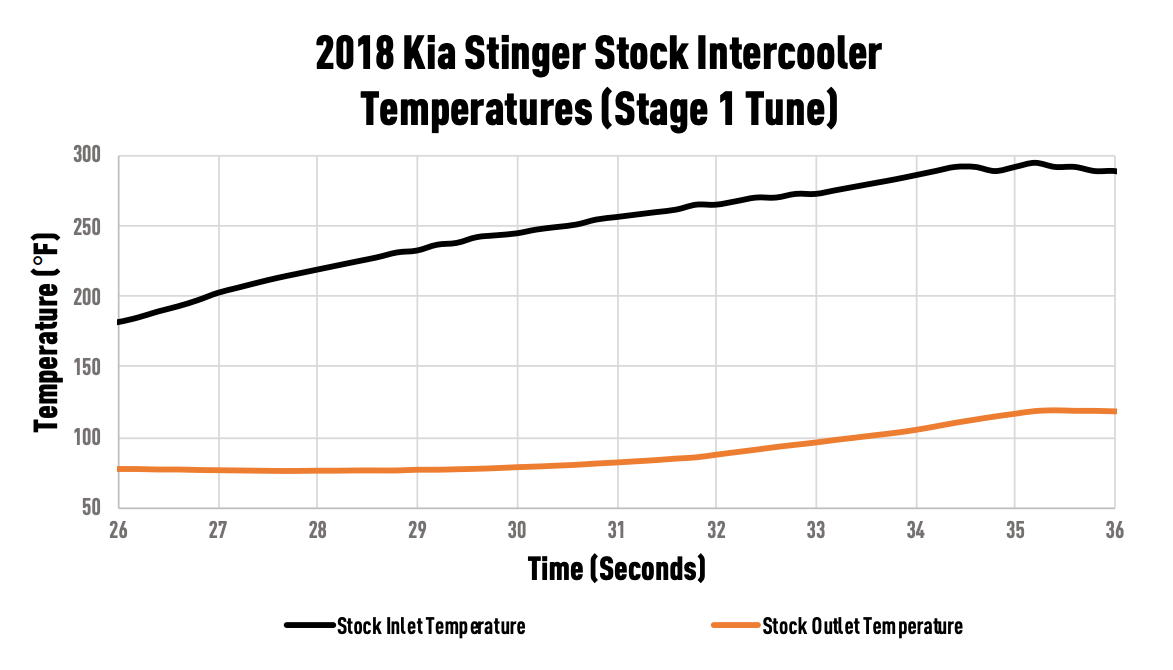
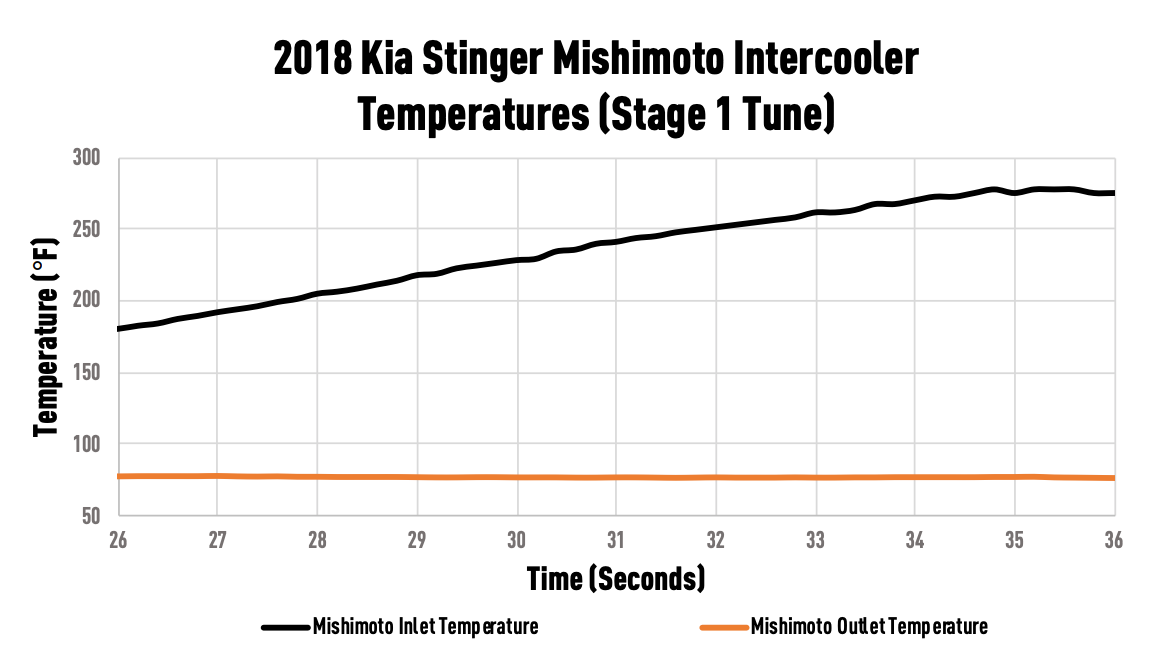
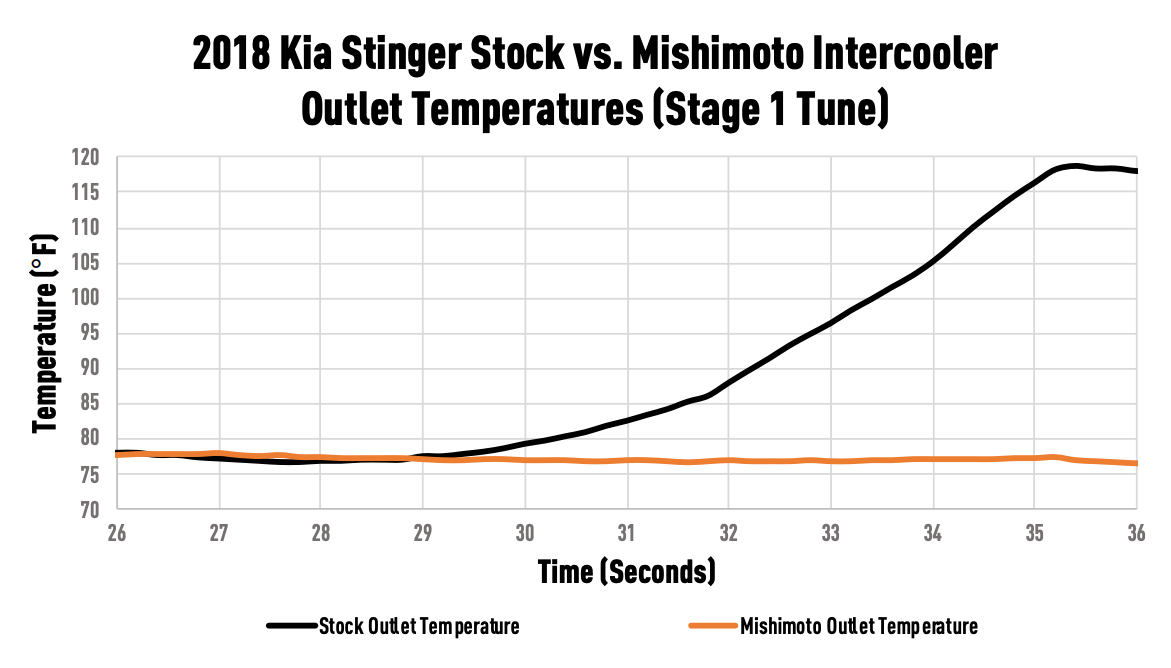
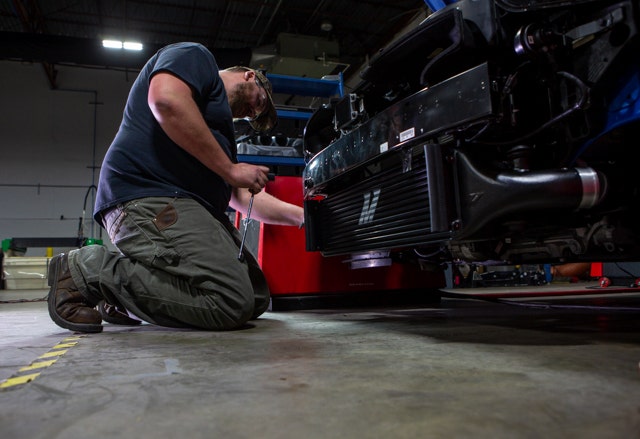
Next up was a repeat of the heat soak test. This round of testing will give a more realistic look as to how well the Mishimoto kit would perform on a daily basis in conjunction with a modified Stinger.
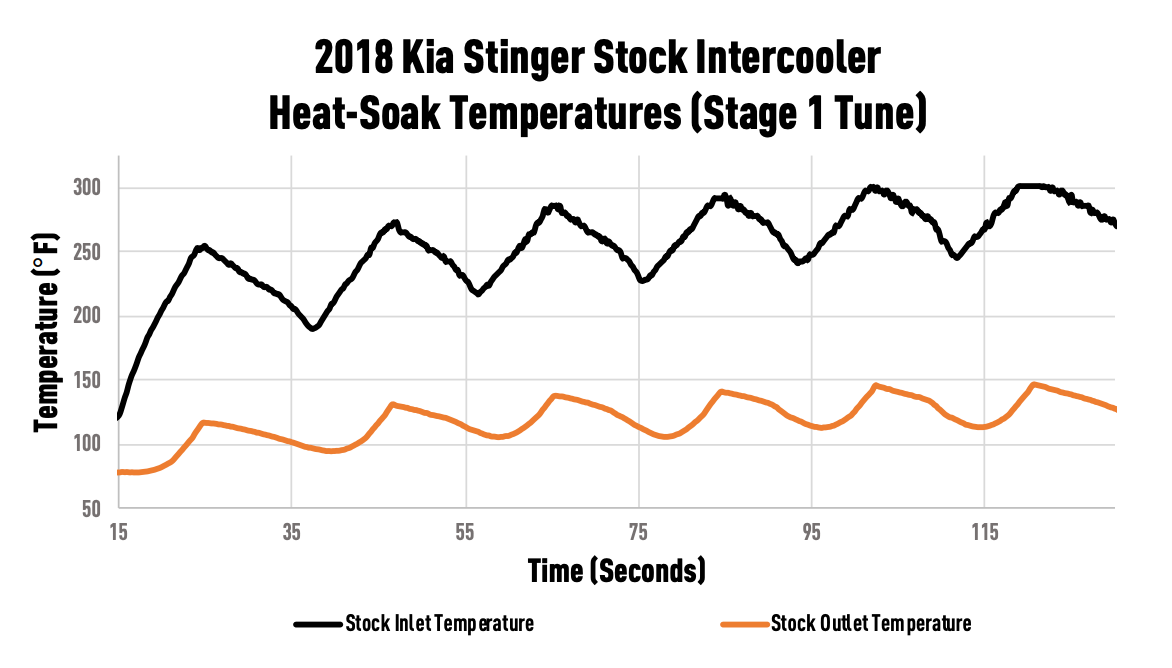

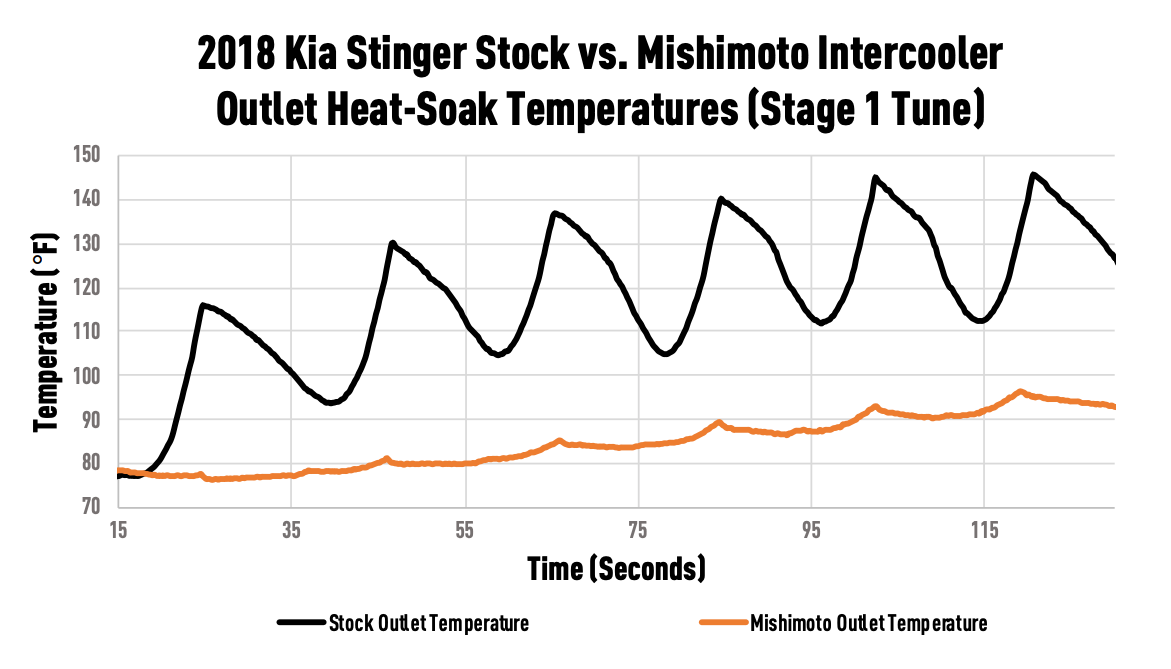
Extra Sting
Yes, the main goal with the creation of this intercooler kit isn't necessarily to add power, but rather improve the platform for bigger power numbers down the line. However, the two main attributes that we're improving on, cooling and flow, often are the means of cramming some extra horses under the hood. That said, in our testing we did note a power gain over the stock tuning of 8 whp and wtq, and an additional 6 whp and 8 wtq on top of the Stage 1 map.
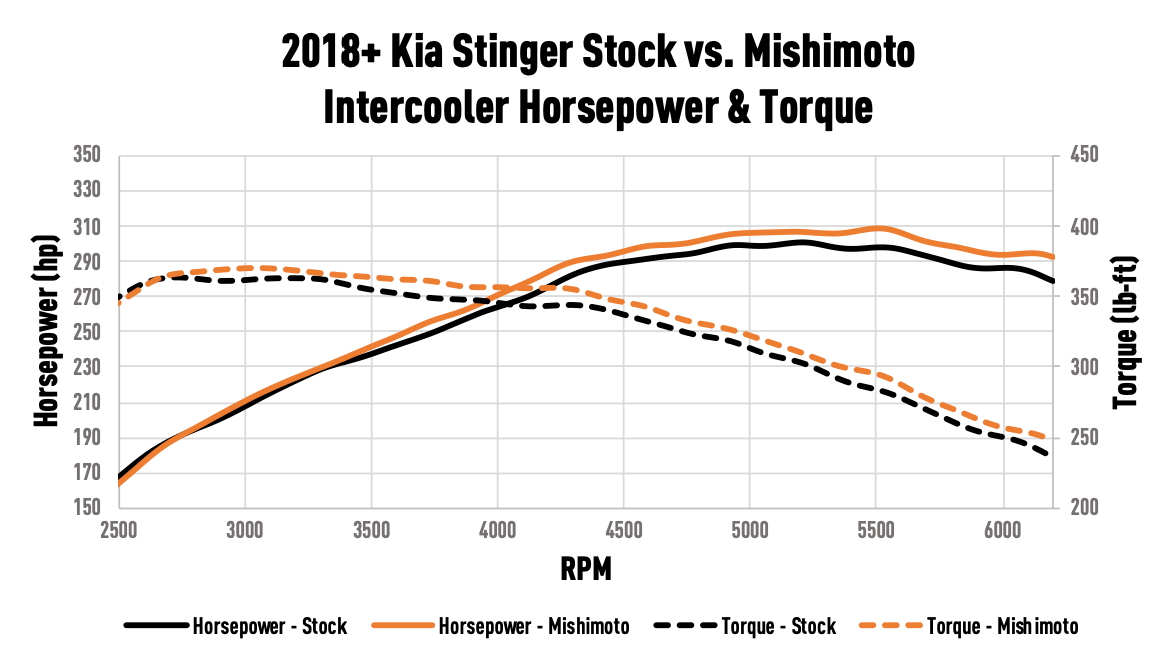
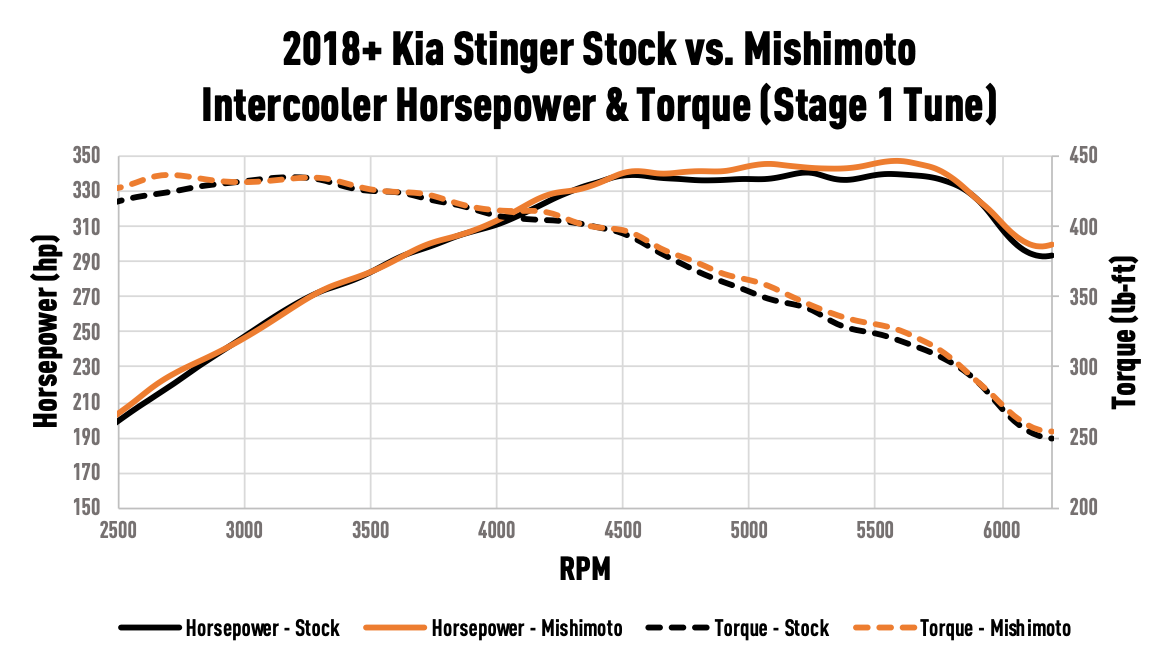
Pressure Check
Maintaining pressure is also just as important when it comes to your upgraded intercooler kit. Increasing the size and density of the components is bound to mean differences in pressure, but our engineer already had that in mind. By choosing the sweet spot in the piping size, especially when it came to the Stinger's trademark merger section on the hot-side of the piping, our engineer was able to keep the system pressure in check.

In just this section alone we were able to remove a choke point and increase the flow from the turbos to the intercooler by 51% over the stock components. Combined, our full kit, was able to maintain only a 1.5 PSI drop compared to the stock kit.
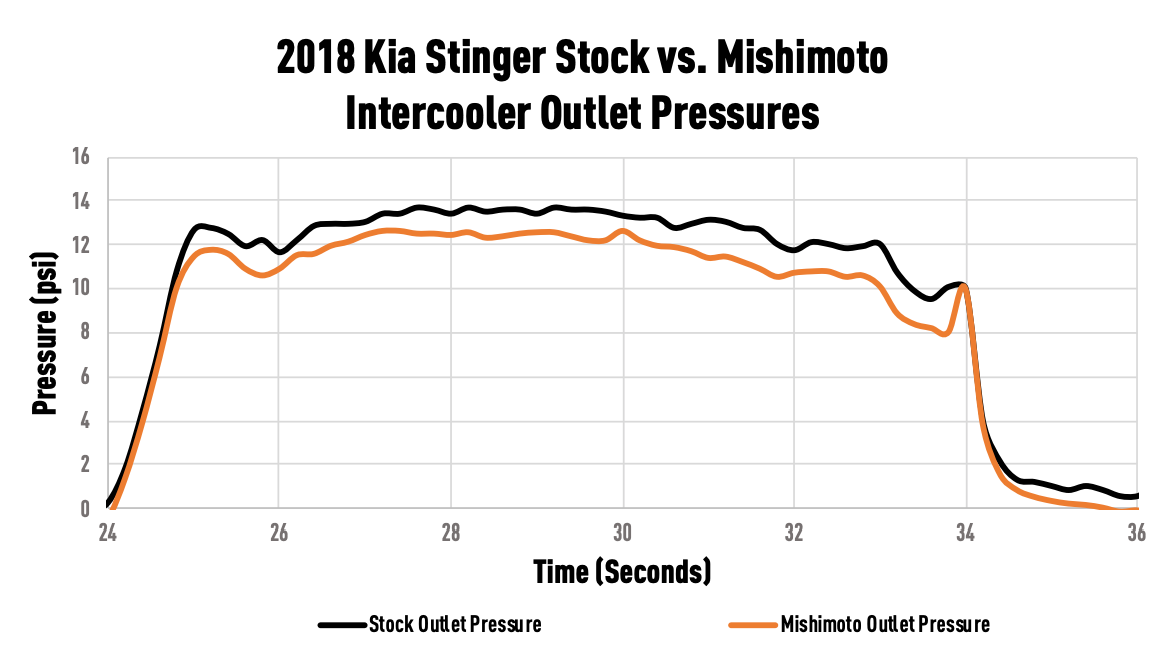
Since the Stinger started rolling off of the lots, owners have been questioning how to make their individual splash bigger. Kia designed and delivered a solid platform of speed, but in order to go further, that platform needed some work. With the Mishimoto Performance Intercooler Kit installed, not only will that splash be bigger, but given the cooling properties, that splash comes with some ice crystals as well. Make sure to stay tuned for our presale coming soon.
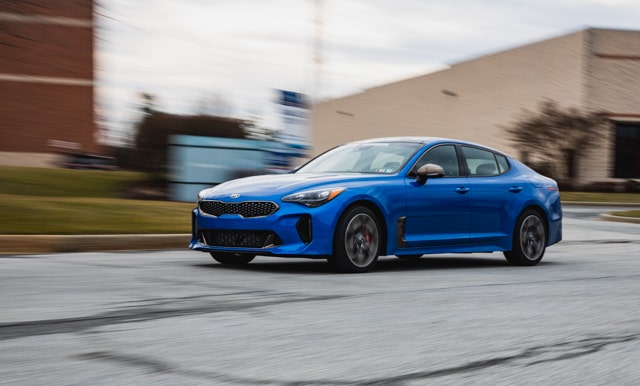
Thanks for Reading!
-Nick





